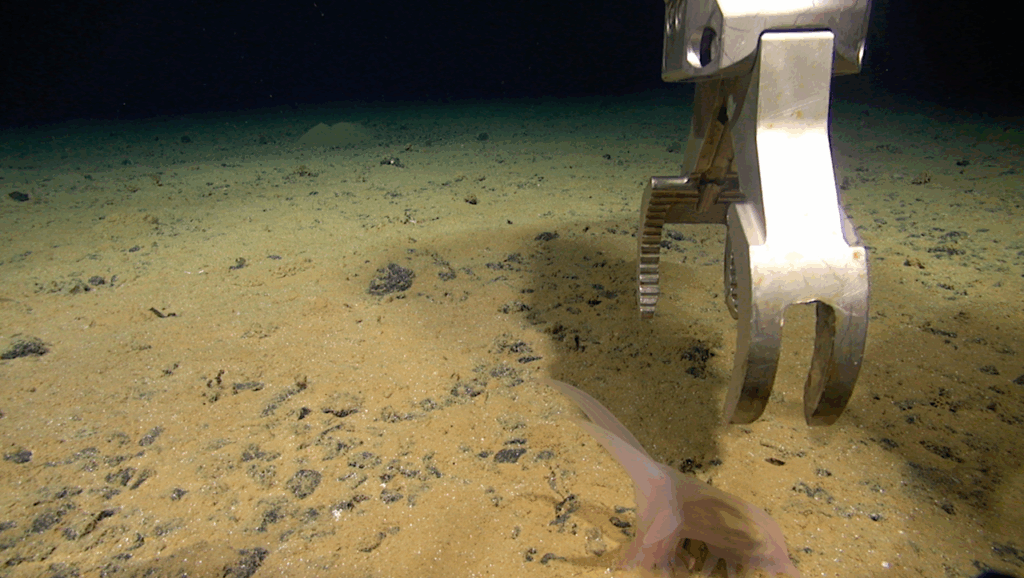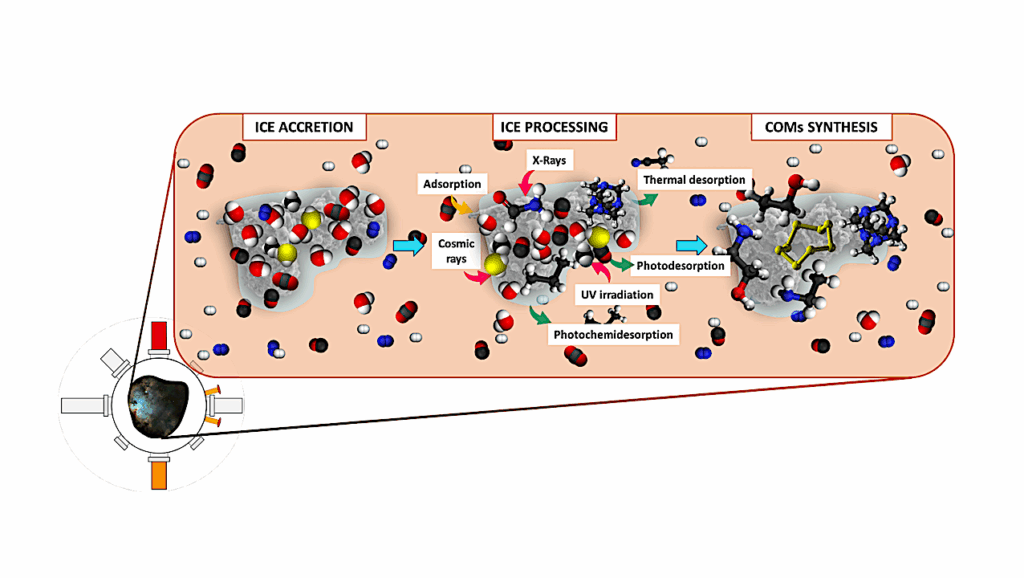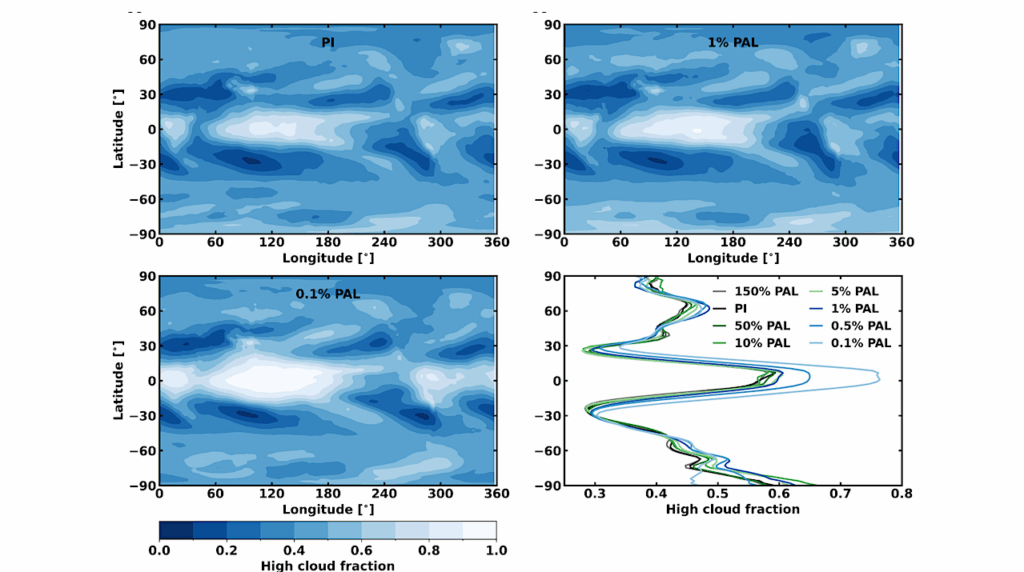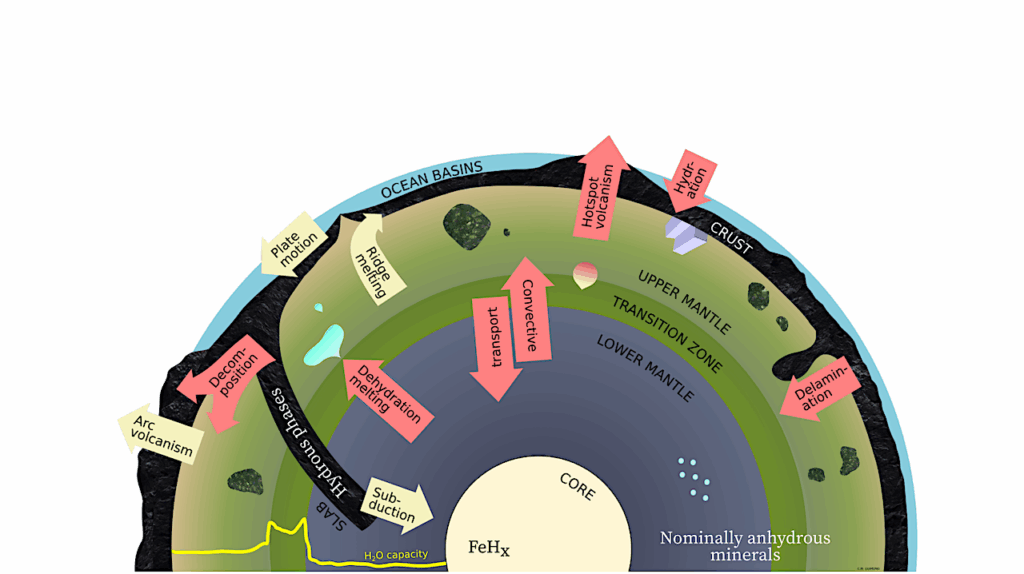Lightning-induced Chemistry On tidally-locked Earth-like Exoplanets

Determining the habitability and interpreting atmospheric spectra of exoplanets requires understanding their atmospheric physics and chemistry.
We use a 3-D Coupled Climate-Chemistry Model, the Met Office Unified Model with the UK Chemistry and Aerosols framework, to study the emergence of lightning and its chemical impact on tidally-locked Earth-like exoplanets. We simulate the atmosphere of Proxima Centauri b orbiting in the Habitable Zone of its M-dwarf star, but the results apply to similar M-dwarf orbiting planets. Our chemical network includes the Chapman ozone reactions and hydrogen oxide (HOx=H+OH+HO2) and nitrogen oxide (NOx=NO+NO2) catalytic cycles.
We find that photochemistry driven by stellar radiation (177-850 nm) supports a global ozone layer between 20-50 km. We parameterise lightning flashes as a function of cloud-top height and the resulting production of nitric oxide (NO) from the thermal decomposition of N2 and O2. Rapid dayside convection over and around the substellar point results in lightning flash rates of up to 0.16 flashes km−2yr−1, enriching the dayside atmosphere below altitudes of 20 km in NOx.
Changes in dayside ozone are determined mainly by UV irradiance and the HOx catalytic cycle. ~45% of the planetary dayside surface remains at habitable temperatures (Tsurf>273.15 K) and the ozone layer reduces surface UV radiation levels to 15%. Dayside-nightside thermal gradients result in strong winds that subsequently advect NOx towards the nightside, where the absence of photochemistry allows NOx chemistry to involve reservoir species. Our study also emphasizes the need for accurate UV stellar spectra to understand the atmospheric chemistry of exoplanets.
Marrick Braam, Paul I. Palmer, Leen Decin, Robert J. Ridgway, Maria Zamyatina, Nathan J. Mayne, Denis E. Sergeev, N. Luke Abraham
Comments: 20 pages, 14 figures, accepted for publication in MNRAS
Subjects: Earth and Planetary Astrophysics (astro-ph.EP)
Cite as: arXiv:2209.12502 [astro-ph.EP] (or arXiv:2209.12502v1 [astro-ph.EP] for this version)
Related DOI:
https://doi.org/10.1093/mnras/stac2722
Focus to learn more
Submission history
From: Marrick Braam
[v1] Mon, 26 Sep 2022 08:20:28 UTC (2,615 KB)
https://arxiv.org/abs/2209.12502
Astrobiology








